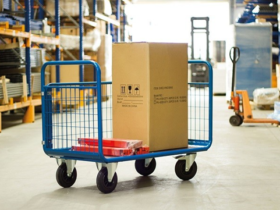Regular dental cleanings are an essential part of maintaining good oral health. In fact, these cleaning sessions not only keep your teeth looking bright and feeling smooth but also help prevent cavities, gingivitis, and other gum diseases. But what exactly happens during a regular dental cleaning session with your dentist in Summit, IL?
Let’s break it down step by step.
1. Initial Oral Examination
Before the actual cleaning process begins, a dental hygienist will conduct a physical examination of your mouth. This involves checking your teeth and gums for signs of inflammation, decay, or other potential concerns. If any major issues are detected, the hygienist may call in the dentist to determine if it’s safe to proceed.
2. Removing Plaque and Tartar
The next step is the removal of plaque and tartar that have built up on your teeth. Plaque is a sticky film of bacteria that forms on the teeth and gums, while tartar is hardened plaque that has been left on the teeth for some time. The hygienist will be using a special tool called a scaler to scrape off these deposits from the surface of your teeth and along your gum line.
3. Gritty Toothpaste Cleaning
Once your teeth are free of tartar, the hygienist will brush them using a high-powered electric brush and gritty toothpaste. This professional cleaning process will effectively clean your teeth, remove any leftover tartar, and get rid of surface stains. The gritty toothpaste might sound harsh, but it’s actually safe to use twice a year during your dental cleaning sessions.
4. Expert Flossing
Even if you floss regularly at home, nothing beats an expert flossing session at the dentist’s office. Your dental hygienist can get deep between your teeth and locate any potential trouble spots where you might bleed at the gums. This might seem unnecessary, but it helps to remove any leftover plaque or toothpaste from earlier in the cleaning process.
5. Rinsing
Your mouth will be thoroughly rinsed out to get rid of any debris. Your hygienist will give you a rinse that contains liquid fluoride to help wash away particles and debris left from the cleaning process.
6. Applying Fluoride
The final step in the cleaning process is a fluoride treatment. This treatment is used as a protectant for your teeth to help fight against cavities for several months. The hygienist will place a foamy gel or a sticky paste into a mouthpiece that fits over your teeth, which is then left on your teeth for about a minute.










